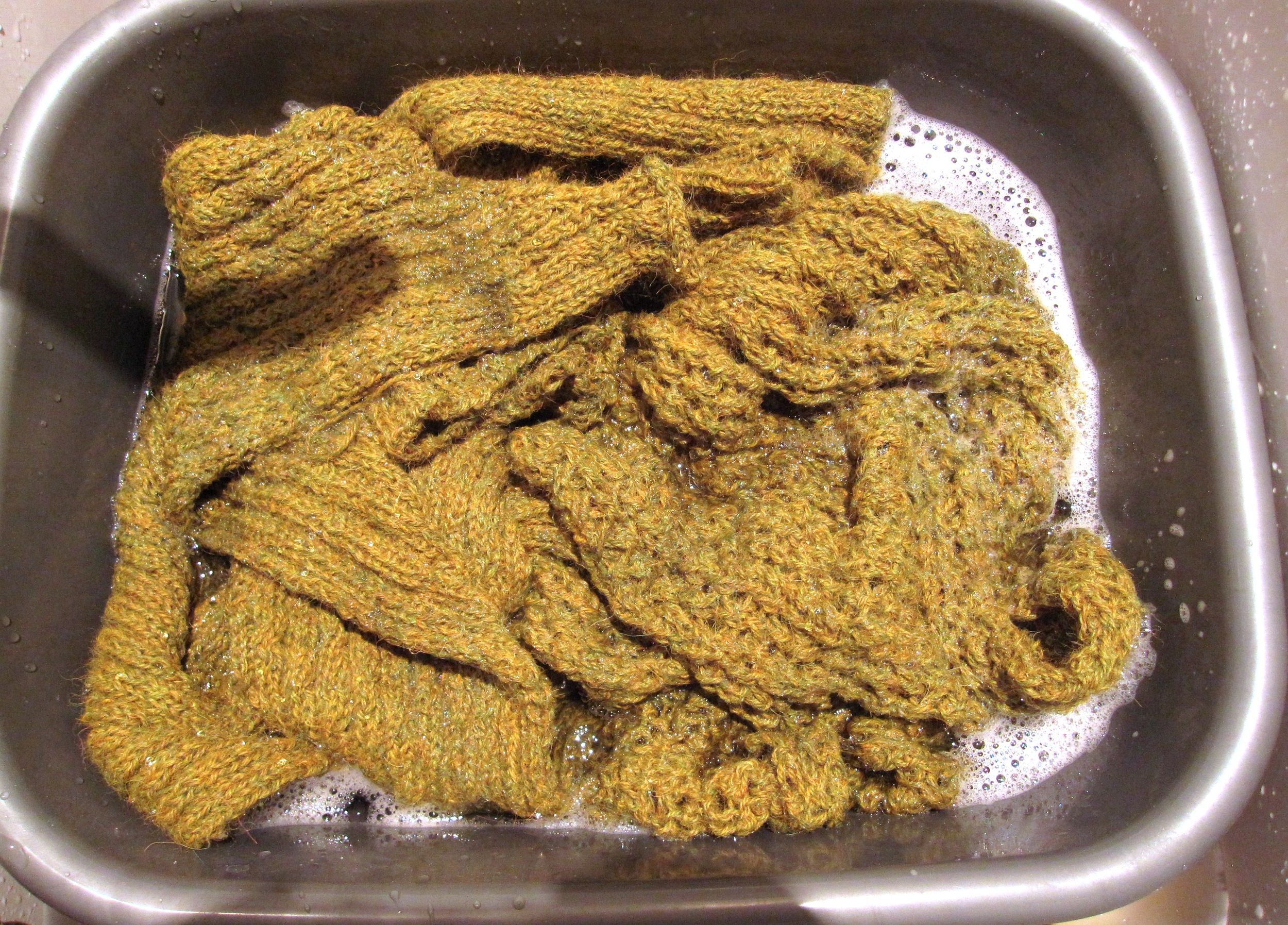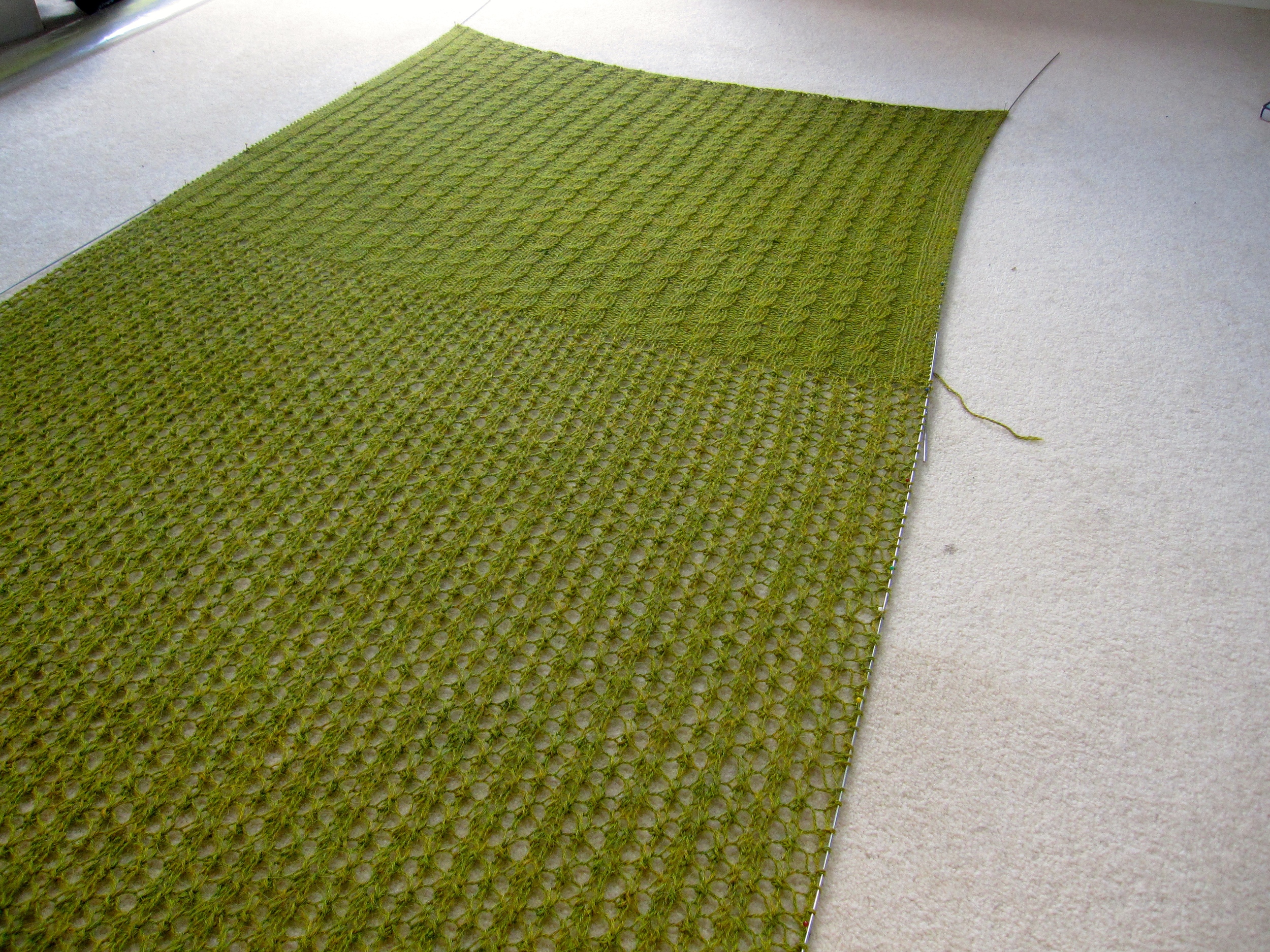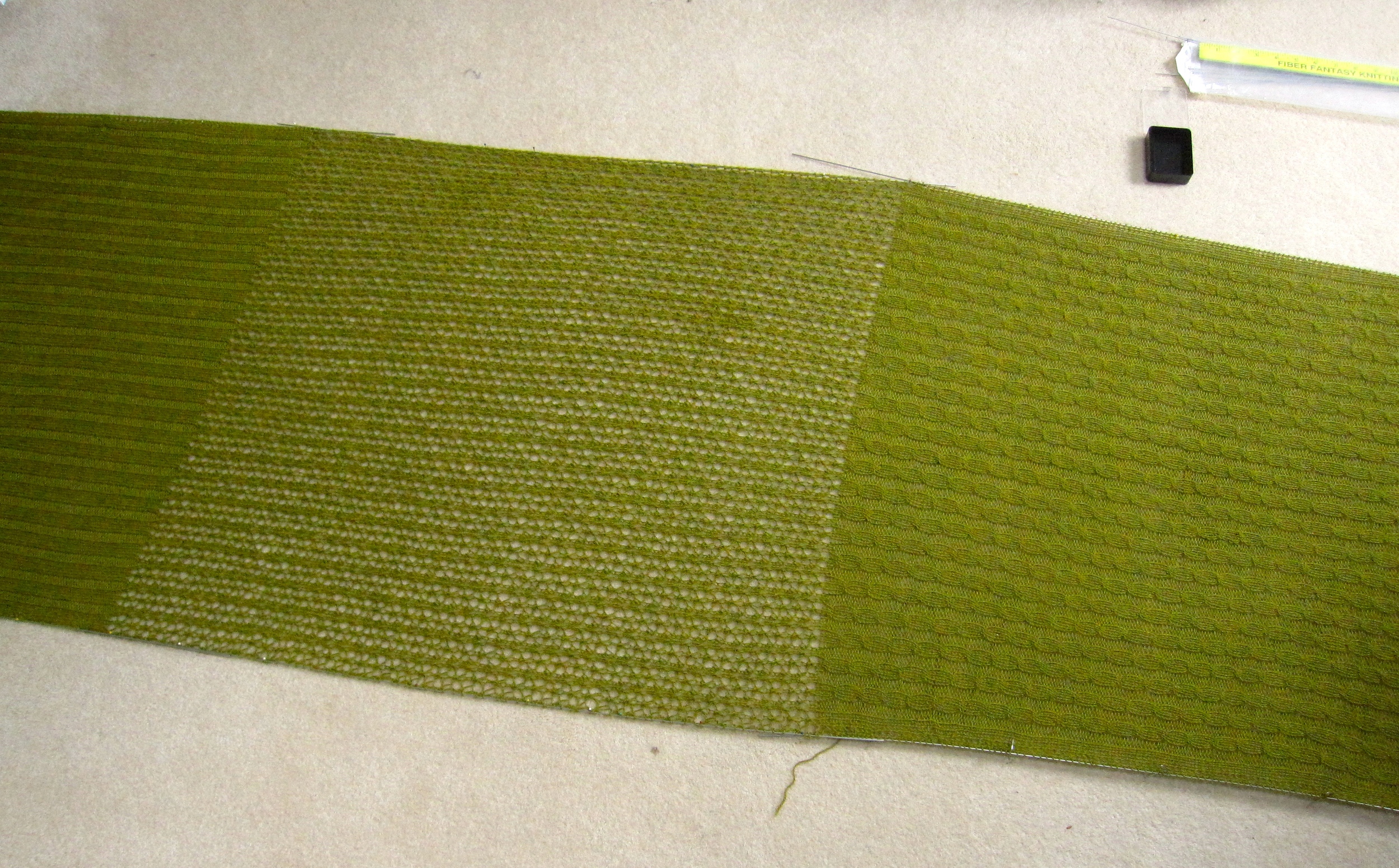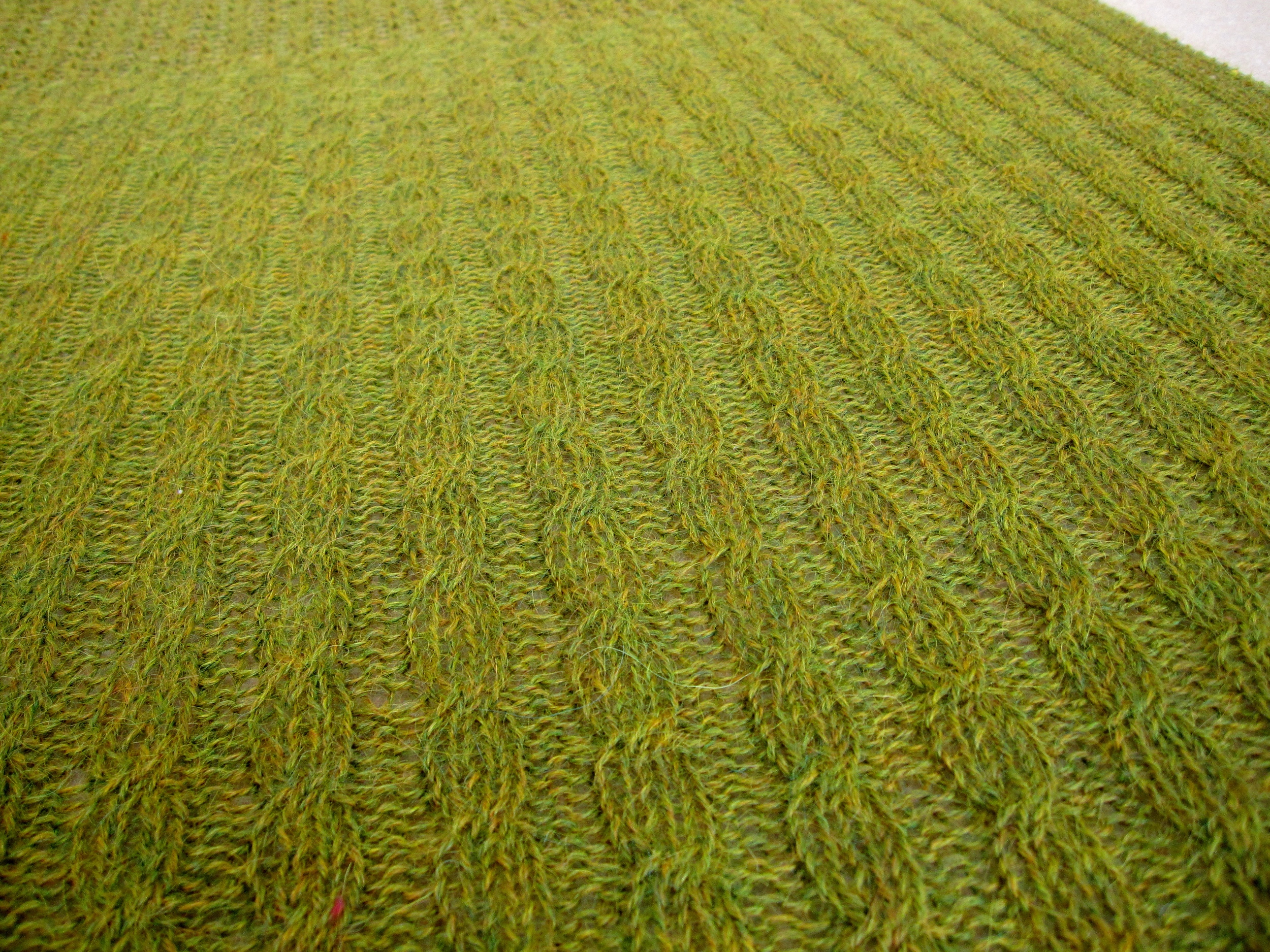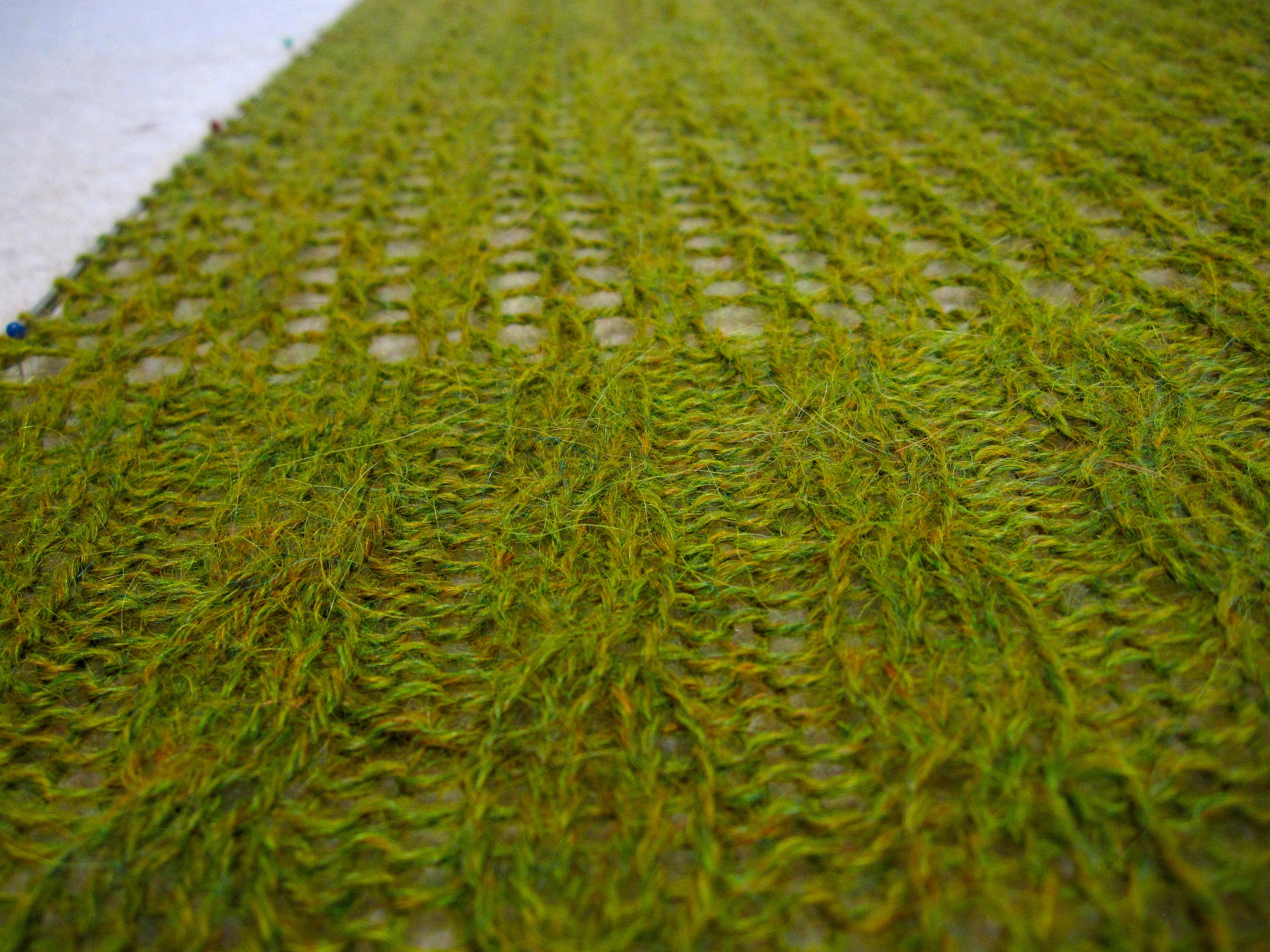FO (finally): Windmill Bay Stole
Some projects seem to knit themselves. The rows slip by effortlessly, and before you know it, you blink and there's a finished object lying in your lap. This project? This project was not that kind of project. Nothing dramatic happened - there were no huge instances of user error, no problems with the pattern, no big crises - but it just took forever. That might be because I chose to knit a 6+ foot long scarf out of heavy fingering weight alpaca (ha!), but aside from that unfortunate decision, everything else went smoothly. It also went really, really slowly.
Project: Windmill Bay Stole by Sashka Macievich
Yarn: Garnstudio Drops Alpaca in Olive (which is really more of a chartreuse...), 182 yds/50 gr, 7 skeins
Needles: US 5/3.75 mm
Start/finish: 1 February - 14 April 2015 for the knitting, a couple more days for blocking
Comments/mods: This is one of those rare instances in which I actually knit the pattern in the yarn called for, and I'm glad I did. I saw this particular color of Drops Alpaca at the Knitting & Stitching show in Olympia in 2013, and fell in love. When I found this pattern that called for that exact yarn, there was no question as to which color I was going to get, despite my insistence that I don't really "do" green.
I love love love love the finished stole. I also hated hated hated knitting it. This is not the fault of the designer (it's a well written, clear pattern) or the yarn (which is super soft, a fabulous color and very affordable), but an issue that I think is inherent in knitting long rectangular things that go on forever and don't get any longer no matter how many rows you manage in a three hour session one evening in front of the TV.
The pattern has three sections, each of which is worked for about 24 inches, so that's an awful lot of ribbing/lace/cabled ribbing to slog through. It is perfect for evening TV knitting thought (particularly the ribbed sections), and the results are totally worth it!
This project was also a really good one for demonstrating the importance of blocking. To whit: before blocking, I had a large, scarf-shaped blob,
Blob o' green alpaca
with wonky stitches, and a very uneven, reverse-hourglass shape (the lace middle section was a lot wider then the ribbing on either end).
Oh ugh. What kind of even tension is that I ask you?
But after a Soak soak, and a couple of hours (well it felt like hours) with my butt in the air and my nose on the carpet, this sucker was blocked and drying.
Even when still wet, just pinning it out did wonders for all those wonky stitches! I blocked the middle section first - not super aggressively, but enough to open the lace stitches out nicely - and then stretched the ribbing to match in width. I didn't worry too much about the length because, as already mentioned, this baby was six feet long before blocking. A day later, I unpinned it and had a wonderful time taking lots of macro beauty shots. Sadly, none of them are modelled yet, as I was flying solo on the photography front, but hopefully I'll get some shots of it in action this week.
Ribbing to lace,
Lace to cabled ribbing...
I think that this might be my last ever foray into long stoles - this was supposed to be my February project for the LSG Cold Sheep thread, and it took me almost two and a half months! The next major project I take on is going to need a bit more challenge to keep me motivated. But I can't wait for the next chance to wear this super warm and scrummy scarf!



